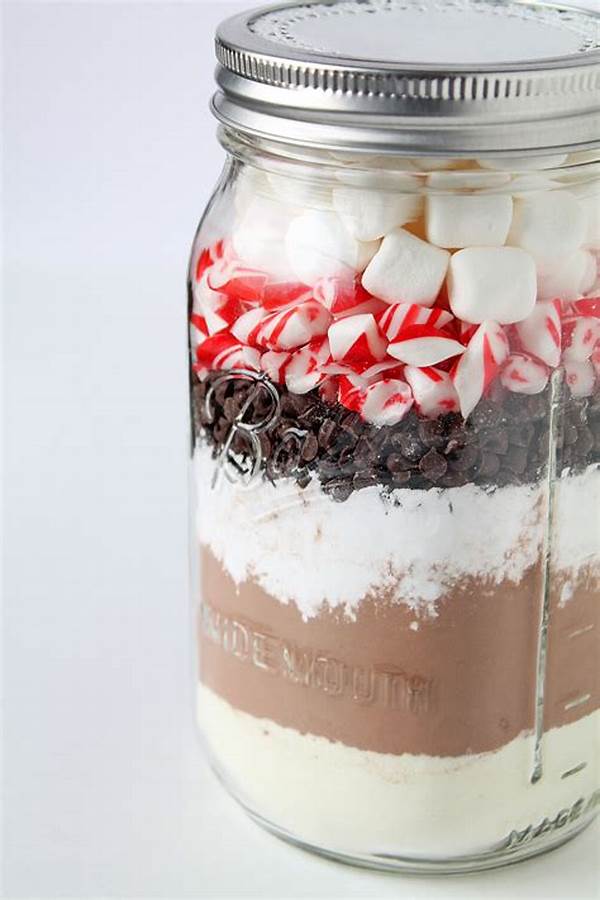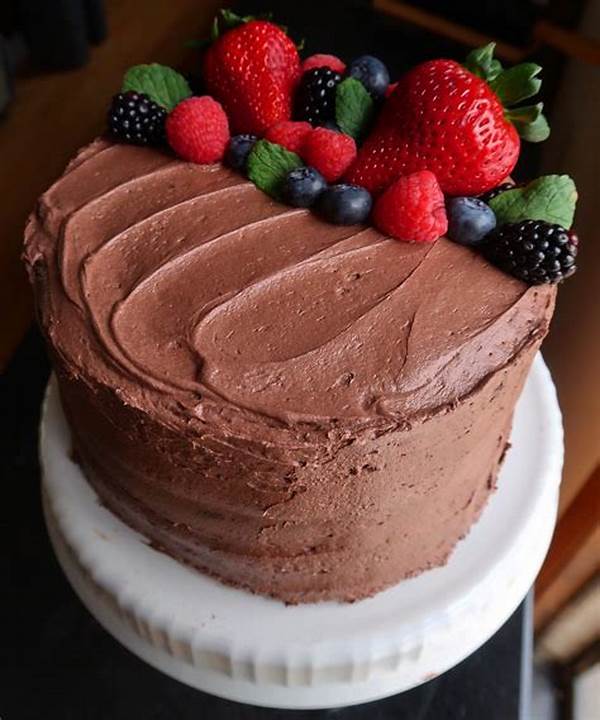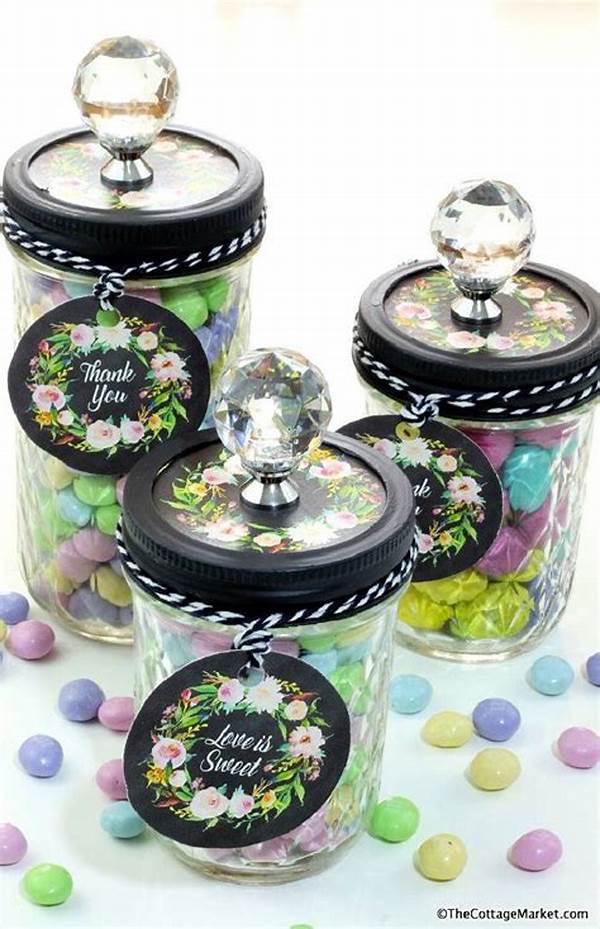Once upon a time in the bustling markets of Tokyo, amid the fragrant wafts of freshly cooked rice and sizzling teriyaki, an age-old tradition quietly unfolded each day—bento making. As dawn kissed the cityscape, Mrs. Haruto, an elderly woman with wisdom crinkling at her eyes, prepared lunch for her grandchildren. Each bento she crafted was a love letter wrapped in lacquered boxes. With nimble fingers, she filled them with an assortment of traditional delights, each bite telling a story, each ingredient a brushstroke in a family portrait. These were the classic Japanese bento fillers, carefully chosen not just for their flavors, but for the smiles they brought to the faces of her loved ones.
Read Now : Stevia And Agave For Vegans
Treasured Ingredients: The Heart of Classic Japanese Bento Fillers
In Mrs. Haruto’s kitchen, every ingredient had a history. The umeboshi, pickled plums, were more than just a tangy surprise; they represented perseverance and health, a nod to meals gifted to samurais long ago. Tamagoyaki, a sweet, layered omelet, unfolded memories of childhood breakfasts, infused with warmth and laughter. Little meatballs of teriyaki chicken whispered tales of celebratory feasts, offering a savory counterpoint to the rice. Mixed vegetables, often simmered in soy, mirin, and fish stock, brought color and balance, embodying the Japanese ethos of natural harmony. No bento was complete without onigiri, rice balls seasoned with a pinch of salt and wrapped lovingly in seaweed—simple, filling, and a testament to the beauty of minimalism.
Each classic Japanese bento filler was a beacon of nostalgia, a canvas where cultural richness met everyday simplicity. As Mrs. Haruto stacked the tiered boxes, her deft hands moving with practiced ease, she hoped the legacy of these flavors would linger long after the meal, weaving stories of tradition and love into the fabric of her family’s history. The bento, a canvas of edible heirlooms, was more than food; it was tradition encased in lacquered art—handcrafted by the matriarch who lived through Japan’s changing seasons, preserving the essence of home in every bite.
Timeless Tales of Classic Japanese Bento Fillers
Yakitori skewers, with their smoky allure, transformed the lunchtime ritual, creating a sweet and savory memory worth savoring.
Glistening carrots cut into flowers whispered the beauty of seasonal change—autumn leaves captured in every bite.
Braised hijiki seaweed introduced an earthy tale of the sea, grounding the meal with oceanic dreams.
The glimmering roll of sushi delighted with its briny lips of nori, gliding softly between treasured rice grains.
Dainty edamame, plucked from verdant pods, embodied the essence of simplicity, pure and wholesome.
A Taste Journey: Delving Deeper into Classic Japanese Bento Fillers
Mrs. Haruto’s bento boxes were legendary in her neighborhood, not just for the artistry of their presentation but for the depth of flavors they embodied. Each filler within those compartments echoed a delicate balance—a synthesis of tastes, colors, and textures meant to satisfy both the eyes and the palate. Sesame-crusted fish, pan-seared to perfection, delivered a gentle crunch, unveiling soft, flaky flesh bathed in nutty undertones.
And then there was kinpira gobo, the sautéed burdock root and carrot dish, delivering its peppery punch—a reminder of vitality and resilience. Every bento component coexisted harmoniously, standing proud and understated. It was this rich tapestry of flavors that seamlessly carried forward the essence of classic Japanese bento fillers. They were an ode to seasonality and mindfulness, guiding all who partook on an introspective journey with every bite they savored.
Engaging Stories through Classic Japanese Bento Fillers
On a rainy afternoon, the dance of rice vinegar through sunomono cucumbers became a story of bright refreshment, weaving through shadows.
Tender shreds of karaage chicken whispered into each stormy night, drawing its warmth from memories of kitchen eaves.
The light-hearted bounce of takoyaki balls, nestled next to fluffy rice, mirrored jovial festivals where laughter filled the air.
Sticky anko-filled mochi tugged at heartstrings, each bite a festival celebration in miniature, whimsical as an autumn breeze.
On misty winter mornings, a succulent slice of sashimi adorned with a tender touch of wasabi brought the sea’s bracing truth to land.
Read Now : Easy Gluten-free Cacao Brownie Guide
Spring announced its arrival through pickled sakura blossoms, woven into bento artistry, embodying the beauty of renewal.
The sweet embrace of red bean paste invoked afternoon serenity, mingling with the crisp mornings of Mrs. Haruto’s youth.
Crisp sheets of nori brushed past the palate, whispering stories of sea adventures and salted wind on Maritime journeys.
Enveloped in lime and soy, mackerel perched proudly, retelling salty tales from beneath rolling waves and vast, fulfilling dreams.
Savoring soba noodles beneath dappled sunshine told the tale of resilience, a tale softened by time—both in the pot and in the heart.
Cultural Bridges: Timelessness in Classic Japanese Bento Fillers
From the heart of Japan, the story of classic Japanese bento fillers crossed oceans and traversed windswept mountain ranges, transcending borders to reach kitchens worldwide. With every thoughtful arrangement, bento meals celebrate the balance of flavors and mindful nourishment. For Mrs. Haruto, preparing bento was not simply a task but a deeply rooted ritual—a method of weaving threads of love and tradition into the fabric of day-to-day life. The humble onigiri, for instance, was not just rice flavored with pickled plums, but a compact representation of sustenance, offering the gift of warmth and memories of hands that had shaped them with care.
Takoyaki on the other hand, little balls filled with octopus and memories of Osaka’s bustling streets, delighted young minds, entwining stories of food stalls and laughter into the simple mid-day meal. These fillers, carried across generations, garnered stories of their own—from rice fields nurtured by ancestral hands to city markets echoing today’s bustling life. Classic Japanese bento fillers are reflections of enduring love—a culinary mosaic where each piece holds stories, old and new, perfectly preserved for those willing to savor both flavor and legacy. The world becomes smaller as these stories multiply, filling containers with familiar tastes that evoke cherished traditions and new adventures alike.
The Art of Crafting Classic Japanese Bento Fillers
In the serene moments before dawn, Mrs. Haruto crafted her bento masterpieces with unwavering dedication. Her hands moved gracefully, gathering a symphony of classic Japanese bento fillers—a generational handshake passed down from mother to daughter. The careful placement of umeboshi in every rice ball expressed her sentiment without the need for words. Bacon-wrapped asparagus provided a modern twist, intertwining traditions old and new seamlessly.
As she layered every dish with care—tangled mizuna greens and simmered pumpkin—her legacy came alive with every vibrantly colored treasure tucked into the box. In those precious moments, she reminisced about the stories she grew up hearing—about young samurais fortified by their bento’s medicinal plums and rice farmers sustained by simple onigiri during harvest. The silence of the early-morning kitchen held whispers of such histories, urging Mrs. Haruto’s talent to honor each tale—a connection that grew ever-finest within the prep.
From carefully cured miso-marinated fish to silky tofu bathed in a gentle mirin broth, each element formed layers of significance steeped in heritage. The bento was not just a meal but an eloquent expression of devotion, a tactile love language exchanged through the simplest of ingredients—transcending her own past to nurture future generations in Japan and beyond. As the first light of morning embraced her creations, Mrs. Haruto silently hoped her grandchildren would savor not only the delicacies but also the stories and traditions the flavors encapsulated—forever rejoining the culinary tales of ancestors long past with the dawn of tomorrow’s luminaries.
Reflections on Classic Japanese Bento Fillers
The grace and care encapsulated in every bento filler truly reflect Mrs. Haruto’s devotion. While she worked with a calm assurance, her artistry never failed to surprise. Every slice of daikon was a versatile puzzle piece, completing her design with muted colors yet bold, crisp flavors imbued with nature’s nurturing essence. These classic Japanese bento fillers mirrored the very heartbeat of traditional culinary outlooks, where sustainability and balance ground culinary adventures into soulful enchantment.
As generations convened around these modest meals, conversations flourished, binding kin through shared tales and textures molded by time and taste. On the surface, a simple tamagoyaki might appear unassuming, yet it embraced the soul of Japanese homeliness—scrambled, shaped, and sweetly harmonized. The shared consciousness flowing through Mrs. Haruto’s time-honored selections illuminated every once-lonely moment with timeless comfort, forging intimate mid-day connections—whether for her grandchildren or for the world beyond her family’s small Tokyo kitchen. Classic Japanese bento fillers are more than just a medley of tradition and innovation—each tidbit expresses humanity’s savory embrace where heartiness meets heartfelt memories unfolding within each bite, curating legacies across a mosaic of past, present, and future.




